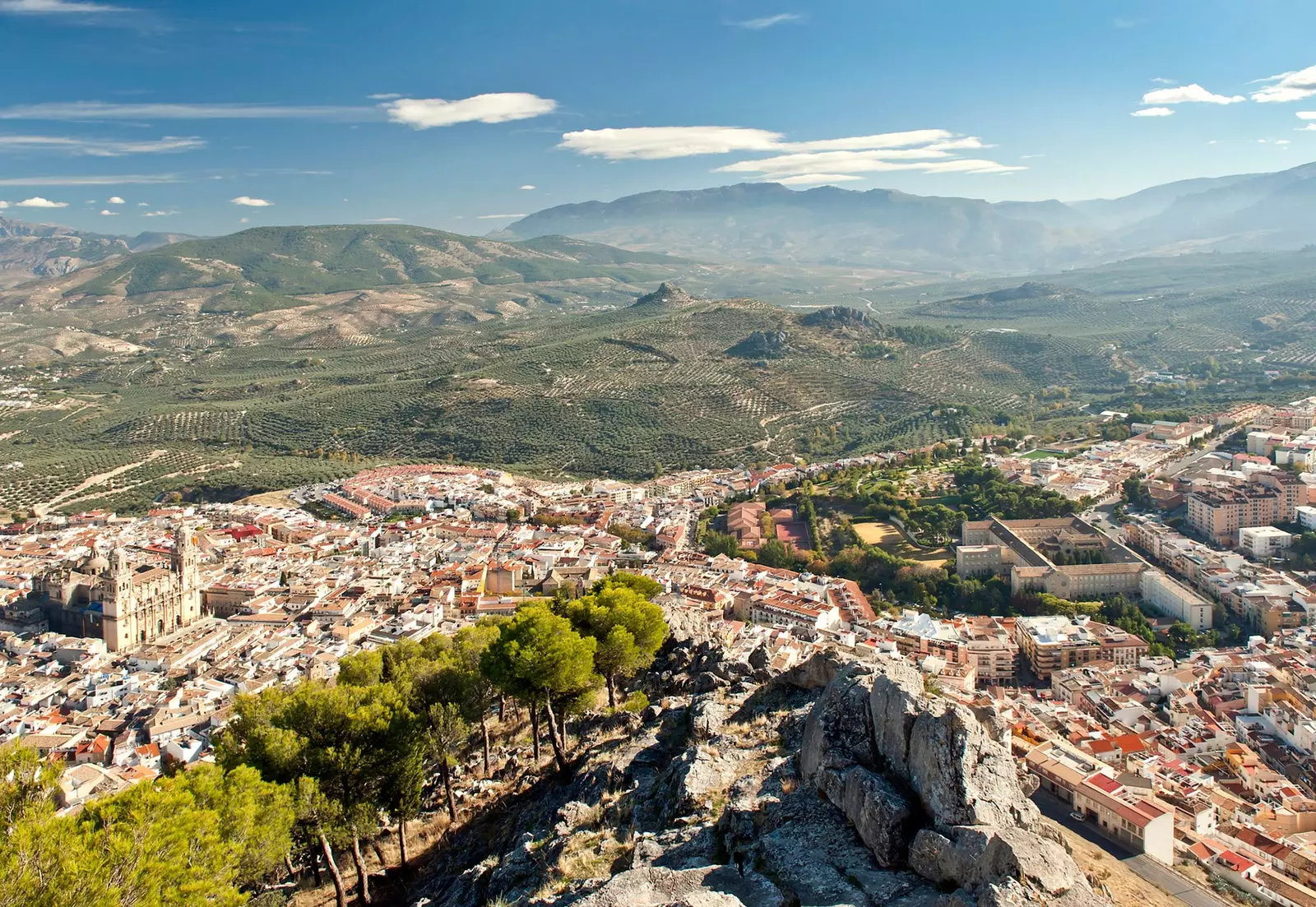
Manual to squeeze Jaen
They say that beauty is within. And the phrase cannot be better for Jaén. Far from the spotlight on the coast, from the fashions and franchises that abound in the big cities, Andalusia's smallest provincial capital has its own style.
An island in the middle of an ocean of olive trees dominated by the ** Santa Catalina Castle, ** set on that "immense tawny mountain" that Alexandre Dumas described as he passed through the city.
The fortress is in the highest part of the municipality and served to control a good part of the Guadalquivir Valley and access to the Kingdom of Granada. Although today it is easily reached thanks to a beautiful road that runs through pine forests, the place was almost inaccessible in its day.
It was always a land of frontiers, where many cultures have left their mark. so many, that could give for a series with more seasons than Game of Thrones and that it would run, for the most part, within the walls of the bastion.
Its historical evolution can be seen in the lowest room of the tower of tribute thanks to one of those videos that are lazy to watch but that, in just ten minutes, provide the basic keys to travel to the past.
In it, you learn how, on a construction base of Iberian origin, the Carthaginian Hannibal gave the enclosure its first military function, which the Romans would later reinforce.
Later it was the turn of the Arabs, until the square was taken by the Castilians and even occupied by Napoleon's troops at the beginning of the 19th century.
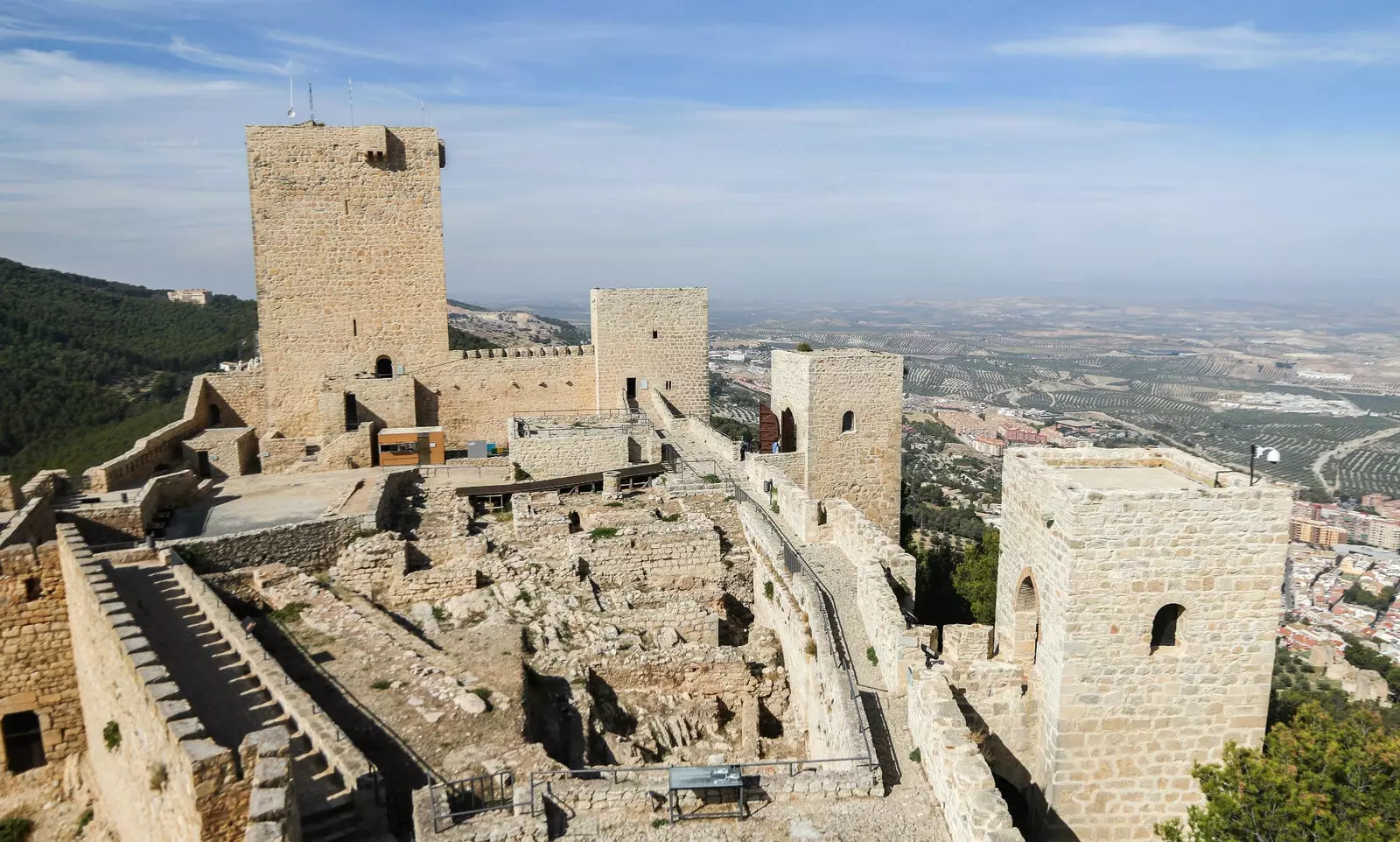
The history of the castle of Santa Catalina could give for a series with more seasons than Game of Thrones.
THE BEST VIEWS
The tour of the castle allows you to enjoy up to six towers, one of which houses the chapel of Santa Catalina, patron saint of the capital of Jaén.
As a curiosity, you can see the dungeons and even the latrines (with two holes that have a drop of 35 meters to the outside), although the most impressive views are reached from the Torre de la Vela.
And not only about the castle itself, but also about the city and the cross that was ordered to be built by Fernando III as a symbol of the Christian conquest of Jaén. It was originally made of wood, but the wind knocked it down so many times that, in the mid-20th century, a concrete one was put in place.
The place, moreover, is the only one on the castle hill that allows you to see the Cathedral of the Assumption, which it is advisable to get to on foot, because the traffic in Jaén is terrible.
They have a lot to do with it network of small and narrow streets, squares and stairways that are part of the Jewish quarter, one of the largest in Europe.
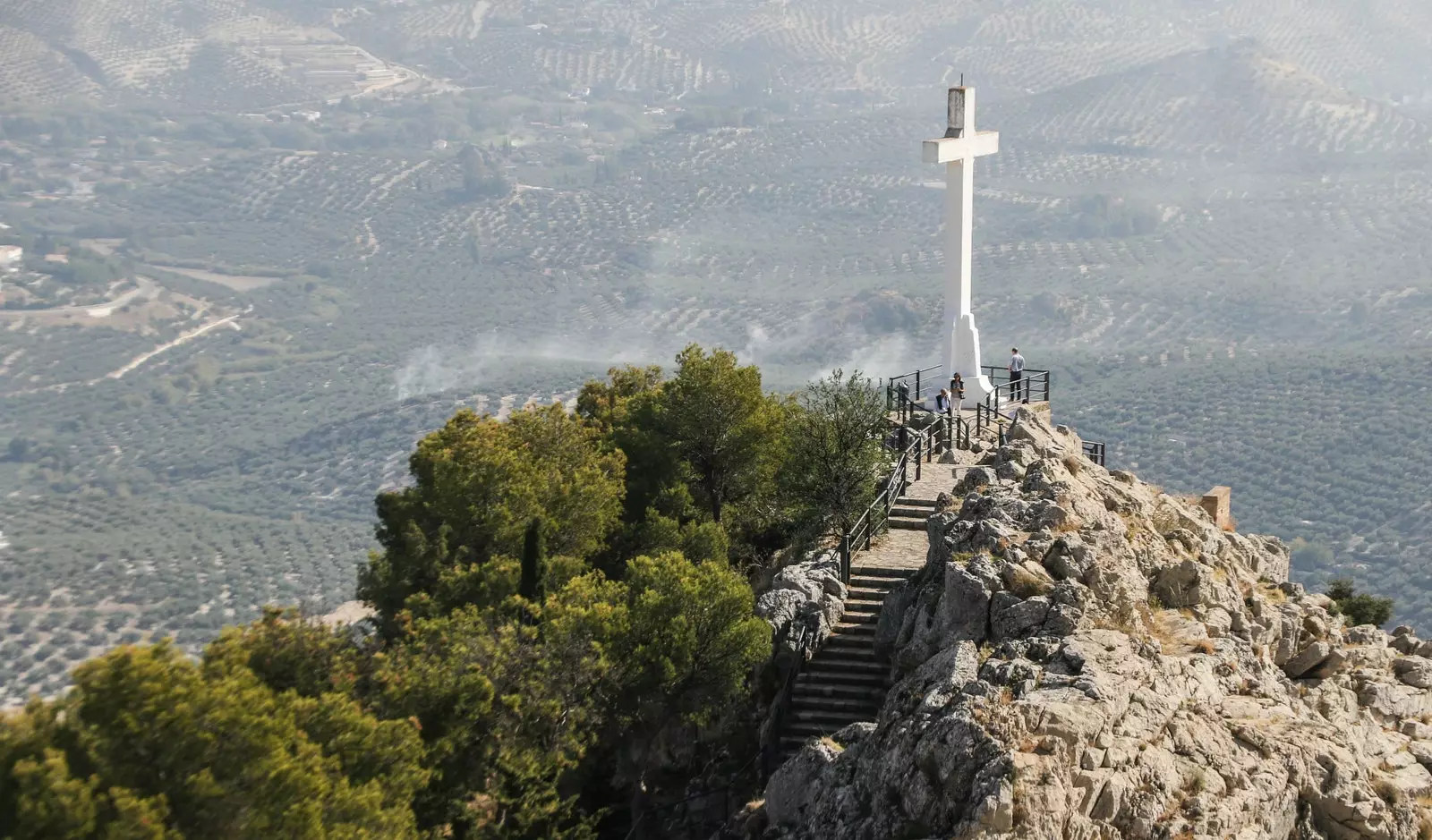
Cross of the Castle of Santa Catalina, symbol of the Christian conquest of Jaén.
CITY WITH RURAL ESSENCE
The best way to get to know the city is to forget about the car and walk around, although some slopes require a stop to breathe.
The positive thing is that everything is close and, also, that the historic center is reminiscent of an excursion through a quiet Andalusian village, where the smell of stew fills the streets, life moves slowly and children play in the street.
Some do it in the school next to the remains of the medieval wall, others in the nearby Plaza de Santa María, where the main local architectural jewel stands, the Cathedral of the Assumption.
It was built between the 16th and 18th centuries on top of a Gothic church built where there used to be a mosque and designed by the architect Andrés de Vandelvira, a master at making cathedrals.
Its spectacular interior keeps, among other relics, the so-called Holy Face which, according to tradition, is one of the folds of the cloth with which the woman Veronica wiped the face of Christ on her way to Mount Calvary. In fact, it is said that the Cathedral was built as a chest to store this relic.
In front of its main baroque-style façade is the town hall and, also, the so-called Casa del Reloj, a beautiful modernist building that is currently undergoing rehabilitation.
MUDEJAR SECRETS
The pedestrian Calle Maestra starts from that modernist corner, where antique shops, where 60-minute TDK tapes are now part of the regular catalog, share space with the tourist office and the Constable Iranzo's palace: today it is a municipal library but In addition, inside there is a beautiful Mudejar-style room.
A few meters further on, Madre de Dios street branches off to the Arch of San Lorenzo, **the only thing left standing of the old church of San Lorenzo (13th-14th centuries)** and whose interior can be visited on Thursdays to Sunday.
Under this construction now pass the cars that circulate along the narrow street Almendros Aguilar, where there is also an air-raid shelter from the days of the Civil War.

Bernabé Soriano street, known as 'La Carrera', reaches the back of the Cathedral.
'THE BATHROOMS
Next to the charming Plaza de San Juan, when the road changes its name to become Juanito El Practicante, it is worth turning north to find the Arab Baths of Jaén, which seem to take refuge in the lowest part of the Villadompardo palace (16th century). XVII), today converted into a cultural center.
Its 450 square meters distributed in four rooms (cold, warm, hot and hall) make these Arab baths the largest and best preserved in Europe, despite being a thousand years old. They were built in the 11th century and reformed a century later by the Almohad government.
Another video explains that they had a long life: even after the Christian conquest they continued to be used, but they fell into oblivion in the 15th century when they were buried (literally) until they were rediscovered and restored in the 20th century. Today they have a light and electric lighting from beautiful starry skylights that create a fantastic atmosphere wrapped in silence.
A legend related to the death in this enclosure of the Muslim king Ali says that one of the rooms emanates positive energy and another negative, even suddenly discharging the batteries of mobile phones or cameras, so be careful!
SMALL BUT BULKY
The same building, with rooms for exhibitions, has a nice viewpoint to observe the historic center of Jaén from above. The one that cannot be seen from there, but can be seen within a couple of minutes' walk from the Arab Baths, is the Fuente del Lagarto, as small as it is important for Jáen.
The legend surrounding this reptile, which narrates how it devoured anyone who came to the spring where it lived until a prisoner defeated it to get his freedom, is one of the Treasures of the Intangible Cultural Heritage of Spain.
Also one of the constants in local history, as varied as its role in the original flag of the city or having given its name to the first Jaén beer or the Lagarto Rock festival.
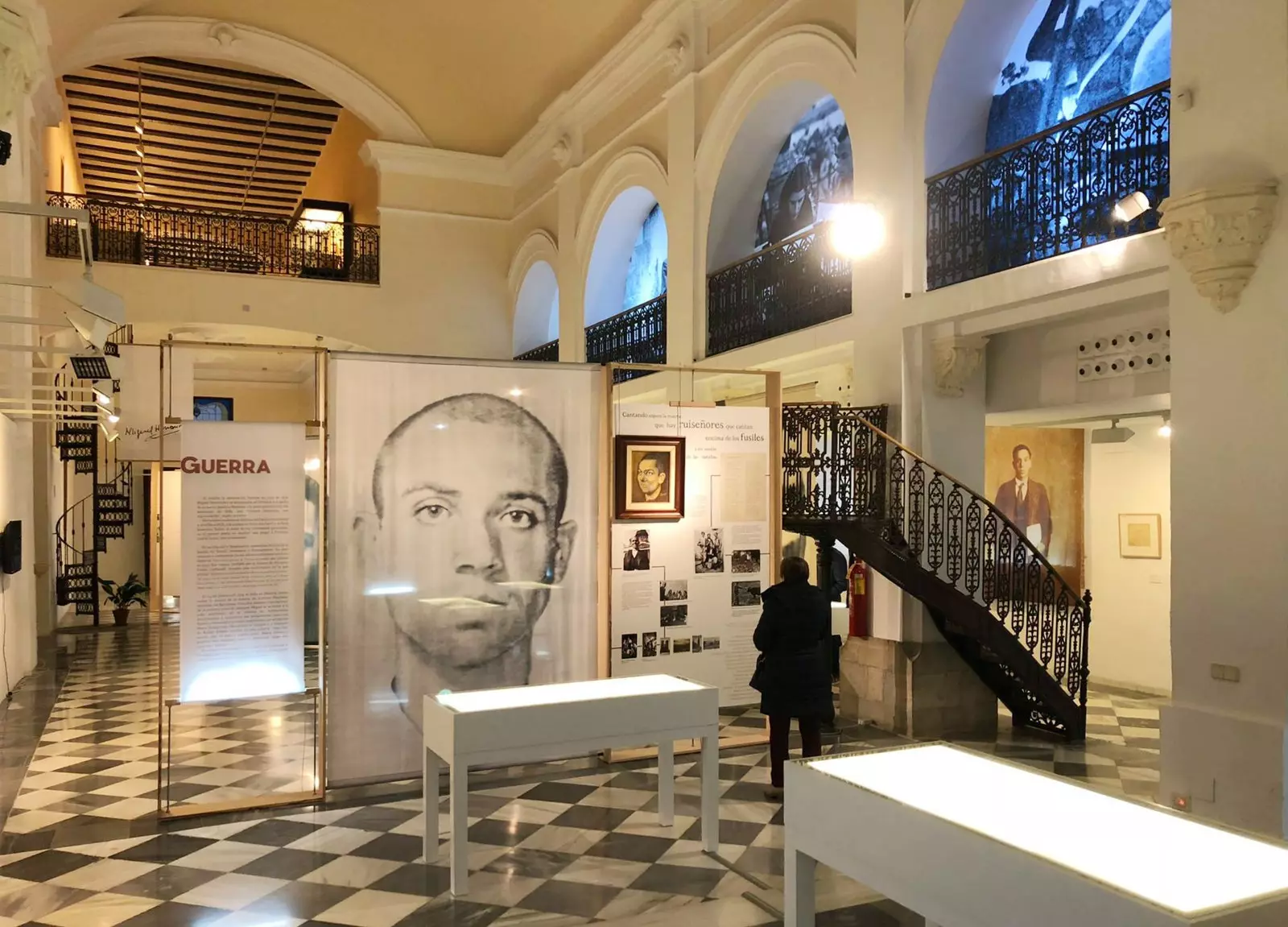
Commemorative exhibition of the 75th anniversary of the death of Miguel Hernández, at the Arab Baths Cultural Center.
GASTRONOMIC MAXIMINIMALISM
The proposals of the Bagá restaurant _(Calle Reja de la Capilla, 3) _, a Tiny place, warm and intimate, with barely room for a couple of tables and four stools next to a wide bar. Its maximum capacity is 15 people.
The kitchen is in the same space, so at all times you can see the team of cooks, who plate 90% of the menu in front of the diner. A melee in which he surprises with his creations a chef who carries his province even in his surname: Pedro Sánchez Jaén, whom everyone knows as Pedrito, just as he wears his work uniform.
After 16 years as head chef of Casa Antonio _ (calle de Fermín Palma, 3) _, he saw his opportunity when he visited a small bar in front of the Basílica Menor de San Ildefonso. "I wanted to do something new and I didn't hesitate" says the cook.
His cuisine has a lot to do with Jaén. Pedro Sánchez pulls from the local recipe book, but also investigates without putting up barriers.
"We promote the products of the province, we like that they travel little from their origin to the table, but we don't go crazy either," says the chef, who is unable to hide his passion for gastronomy when talking about the green beans that a gardener friend gives him and that he serves with Iberian ham emulsion and cured egg yolk.
Surprise after surprise, the menu is developed with dishes that, despite the short life of the restaurant, are already classics in Bagá, such as Ajoblanco with coconut accompanied by a pineapple and basil granita. Further on, the Cogollo with oyster gazpachuelo and bitter orange zest or the extremely tasty Smoked eel foam with caviar and pistachios.
If Jaén finds his Michelin star one day, he may do it this way.
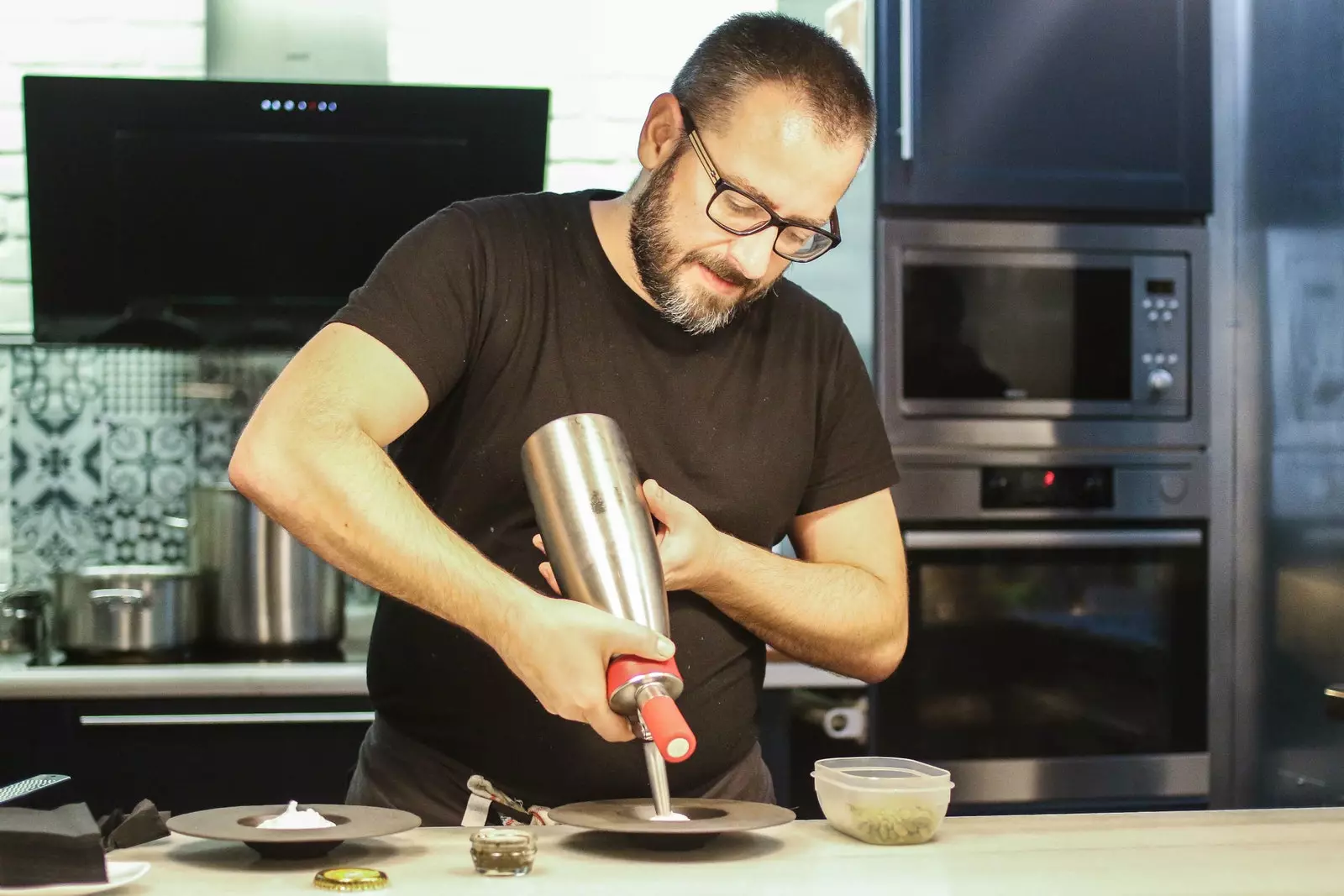
Pedro Sanchez dishes 90% of the recipes in front of the diners.
THROUGH THE BIG DOOR
The gastronomy of the capital of Jaén also has other stops that help to think about when to return to repeat the route.
One of the most interesting is hidden in a small alley and looks like an Irish pub, although J with its Solynieve Group of Experts sounds over the loudspeakers.
It's called Bomborombillos _(Calle Pintor Carmelo Palomino, 12) _, a very Jaén word that means 'Astride, on the shoulders of another person', according to the dictionary of the Royal Spanish Academy (RAE) .
This is what inspires the local menu, where there is a specific section for dishes also called bomborombillos: they include two units and always "carry one product on top of another", as Joaquín Machuca recounts, who kindly attends to the clients of the business that he runs together with his wife for two years.
Smoked trout bulanico from Segura, Soaking olive oil, Creamy boletus with EVOO and violet jam, Crispy black pudding with tomato jam or Smoked sardine on avocado tartar are some of the delicious snacks that can be tasted in Bomborombillos.
Furthermore, as is traditional in the city, each drink is accompanied by a tapa, although here quality prevails over quantity, as evidenced by the homemade taste of its potato stew or the excellent Russian salad.
Everything can be accompanied with local wines, such as those from Casería Los Alfarjes or the excellent Entredicho, promoted by winemaker Pedro Olivares.
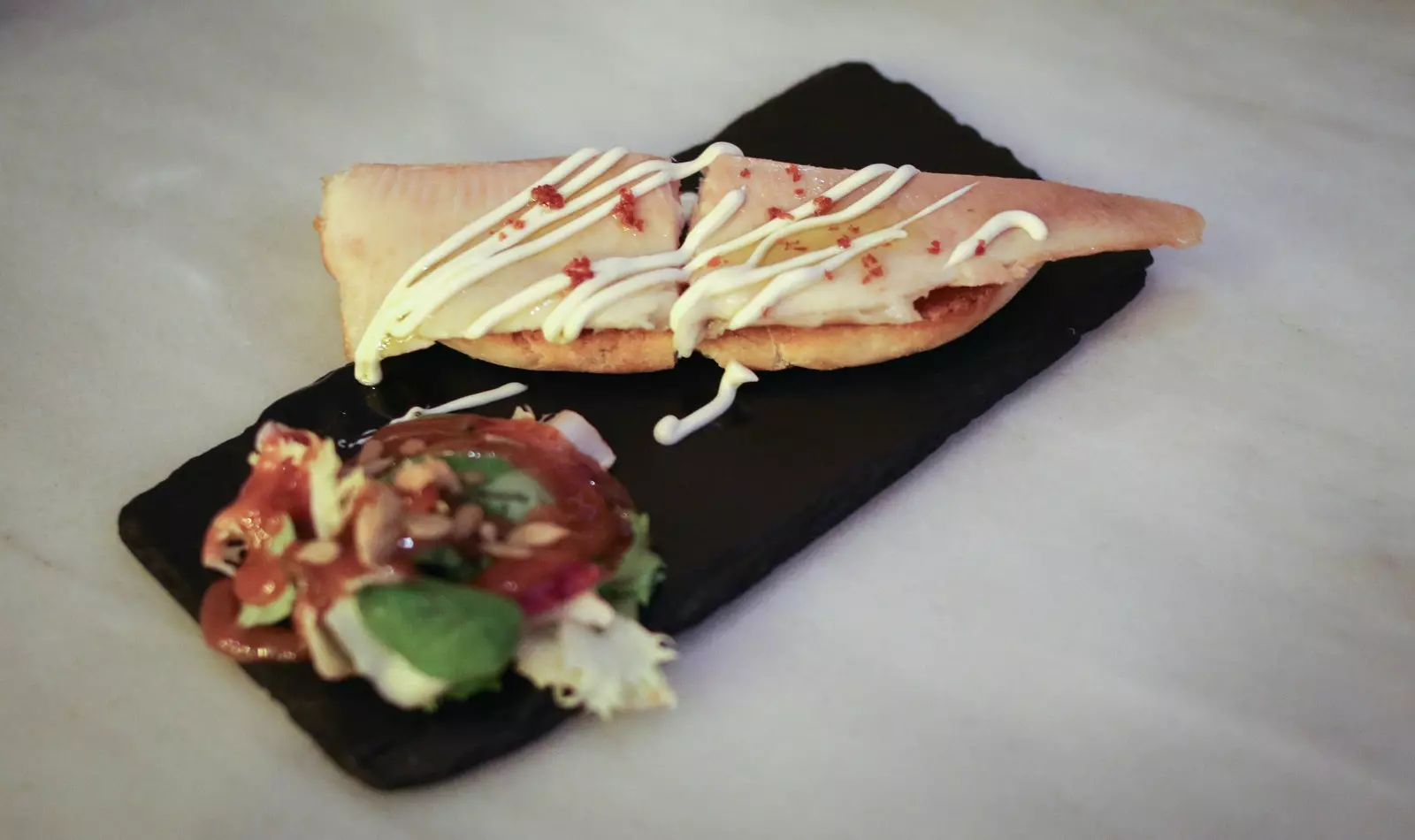
Bulanico of smoked trout from Segura, in Bomborombillos.
ALWAYS GOOD HOURS
Another station on the Jaén menu is Mangas Verdes _(Calle Bernabé Soriano, 28) _, an atypical gastronomic tavern, as his last name says. It has a markedly informal character and has white walls where the beautiful watercolors by Alfonso Rodríguez Márquez stand out.
There, the team made up of Fran Cuadros in the kitchen and Emilio Martín in the dining room has been giving fresh air to the local cuisine with some traveling touches for three years, that can be accompanied by up to 45 wines available for drinking.
They have dishes such as candied artichokes with ajoblanco, cured meat and foie, roasted knuckle taco or red curry with Iberian cheeks from the Sierra de Andújar, sautéed wheat and coriander dentelle.
"We like to give an international look to local products", explains Fran Cuadros, who loves to investigate and, therefore, never forget the surprises that are hidden outside the menu.
Furthermore, the tradition and Sol Repsol of Casa Antonio, the rice dishes of DiXtinto _(Calle Rioja, 1) _ and the good work of the Aceituno family at La Vestida _(Ronda Sur s/n) _ must be part of the visits must-see gastronomic attractions in Jaén, such as some of its most traditional bars such as Taberna Gorrión (Calle Arco del Consuelo, 7) or La Manchega _(Calle de Bernardo López, 8) _.
Nor should we pass up the chance to get to know the Horno de Salvador _(Carretera Castillo de Santa Catalina, S/N) _ next to the castle and where the evenings in the hot summers are a delight.
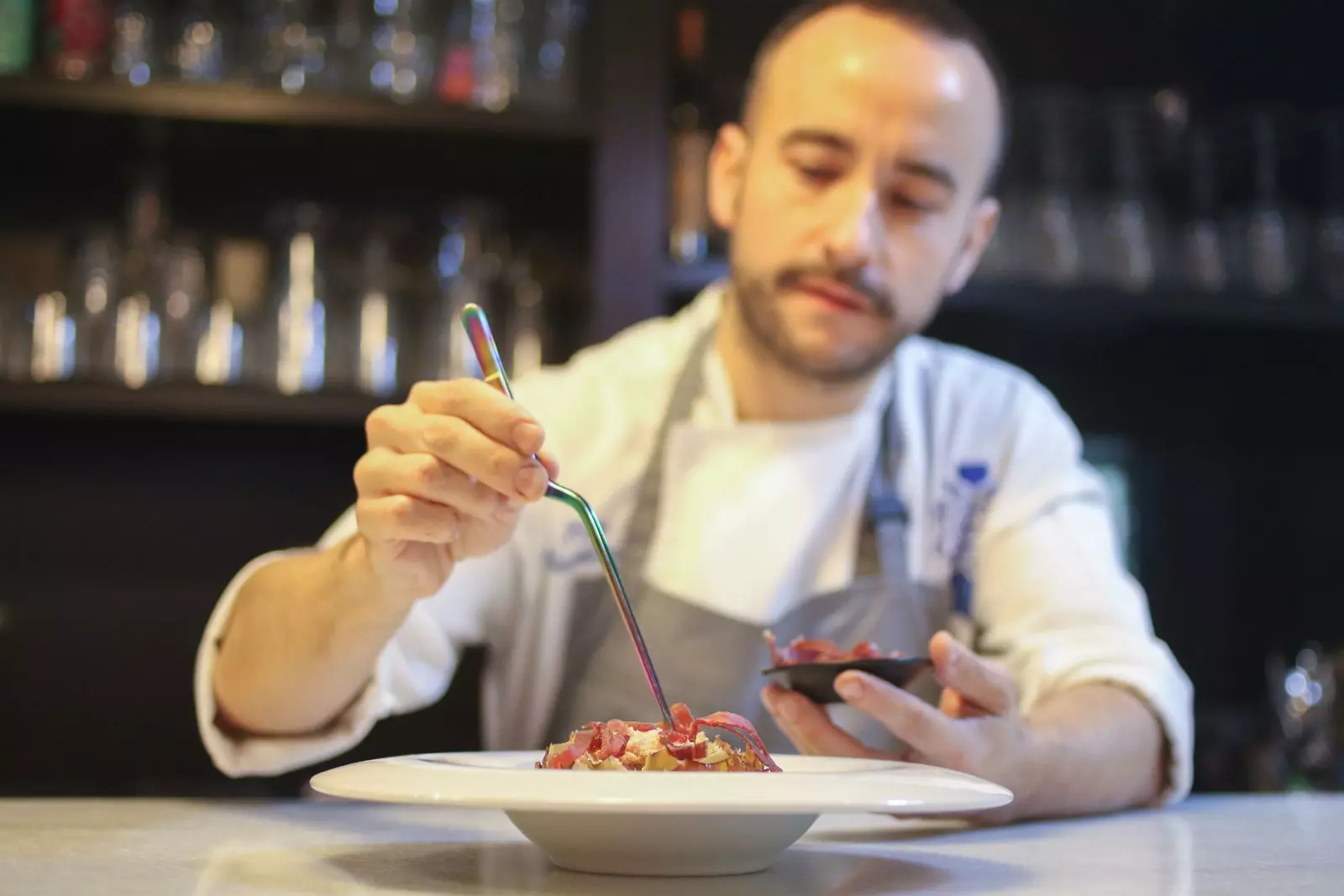
Fran Cuadros plating some candied artichokes with ajoblanco, cured meat and foie gras.
ALTERNATIVE DESSERTS
Berry Taller de Dulces is a space that seems to be taken from the Barcelona neighborhood of Gracia or from the modern heart of Malasaña, but it is located in a residential area of Jaén, practically where the city begins to merge with the olive groves.
Everything is handcrafted: the tables, the furniture and, of course, the dough with which innumerable delicacies are made.
Those responsible are Curro Castro and Cati García, trained at the Espai Sucre hotel school. He has worked in the kitchens of L'angle and ABAC and she in the old Kursaal restaurant, as well as different kitchens in Barcelona and her native Mexican Guadalajara.
"We wanted to bring all that experience to Jaén," says Castro, whose store is already the reference in pastry in the entire city despite opening its doors just two years ago. "The reception has been spectacular," he points out proudly.
Extra virgin olive oil, fresh butter, natural pulps, seasonal fruits and as little sugar as possible are some of the healthy ingredients in a signature pastry where there are fifteen original proposals from Mexico, the United States, England or Germany to which the Berry Taller team always adds "a personal touch".
Thus, the blueberry blondie, the lemon pie, a fluffy cumin bread, some Oreos XXL or the cheesecake and dulce de leche coexist with fritters and French toast, as well as custom-made cakes that can be customized to taste.
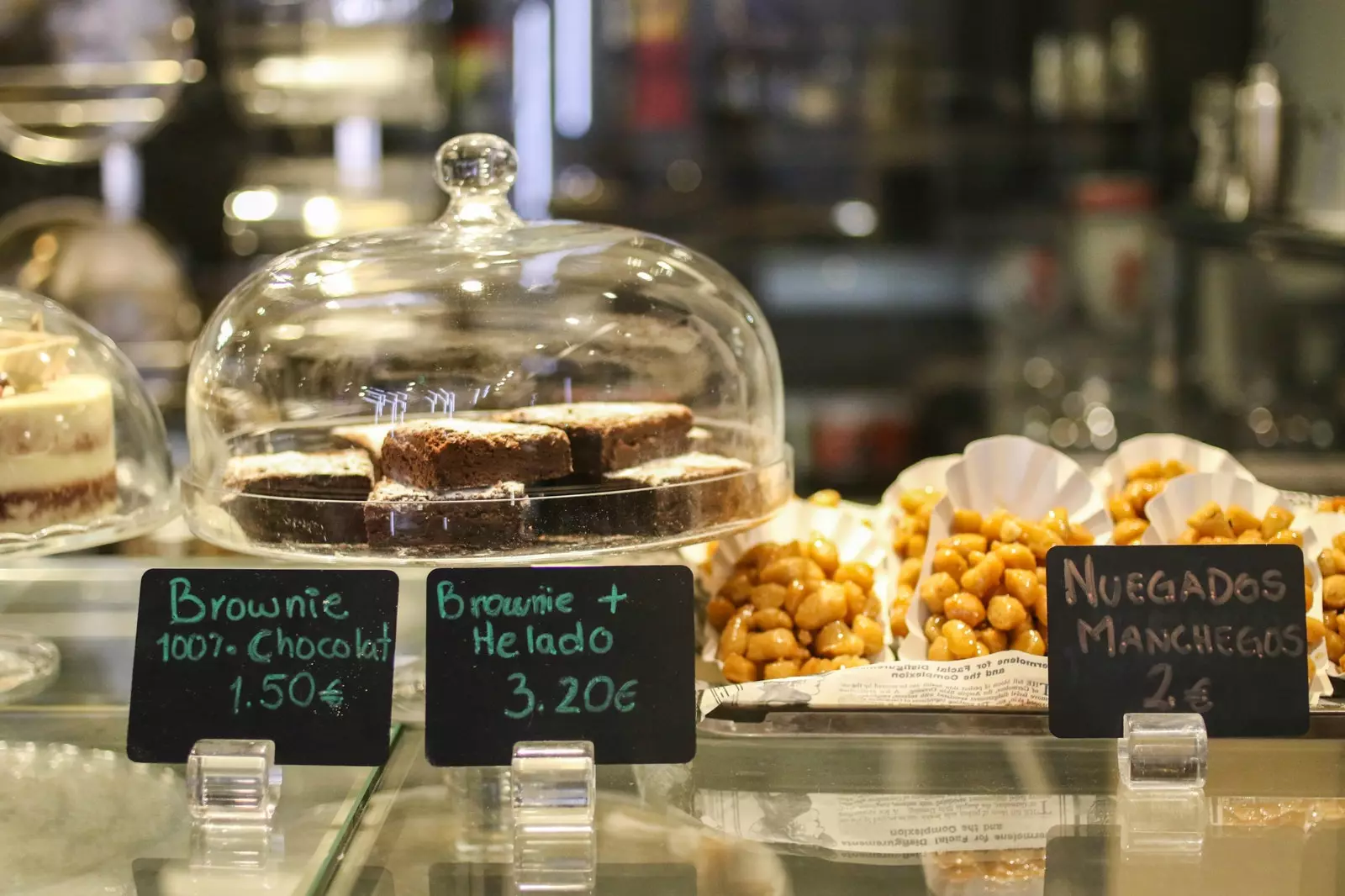
Artisan cakes at Berry Taller de Dulces.
A sweet point and followed that can culminate in the Parador de Jaén. Attached to the castle of Santa Catalina, legend has it that two ghosts wander: that of a former prisoner who today supplants the clients during after-meal talk and that of a young woman who died of lovesickness a few centuries ago and who, in 1984, insistently called room number 22 one night. The place is perfect for dream of Jaén but... Do you dare?
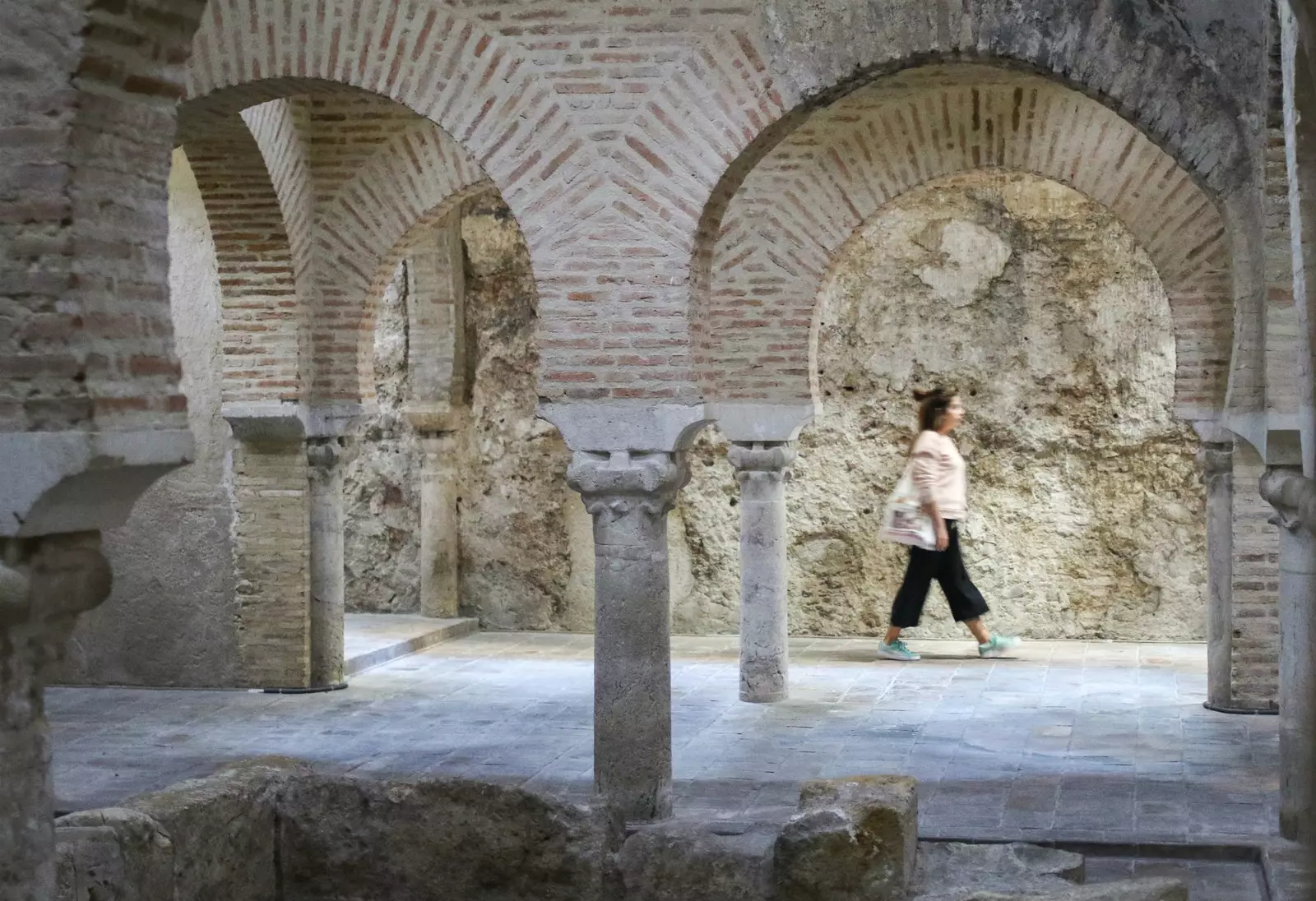
Enjoy the Arab Baths of Jaén at your own pace.
